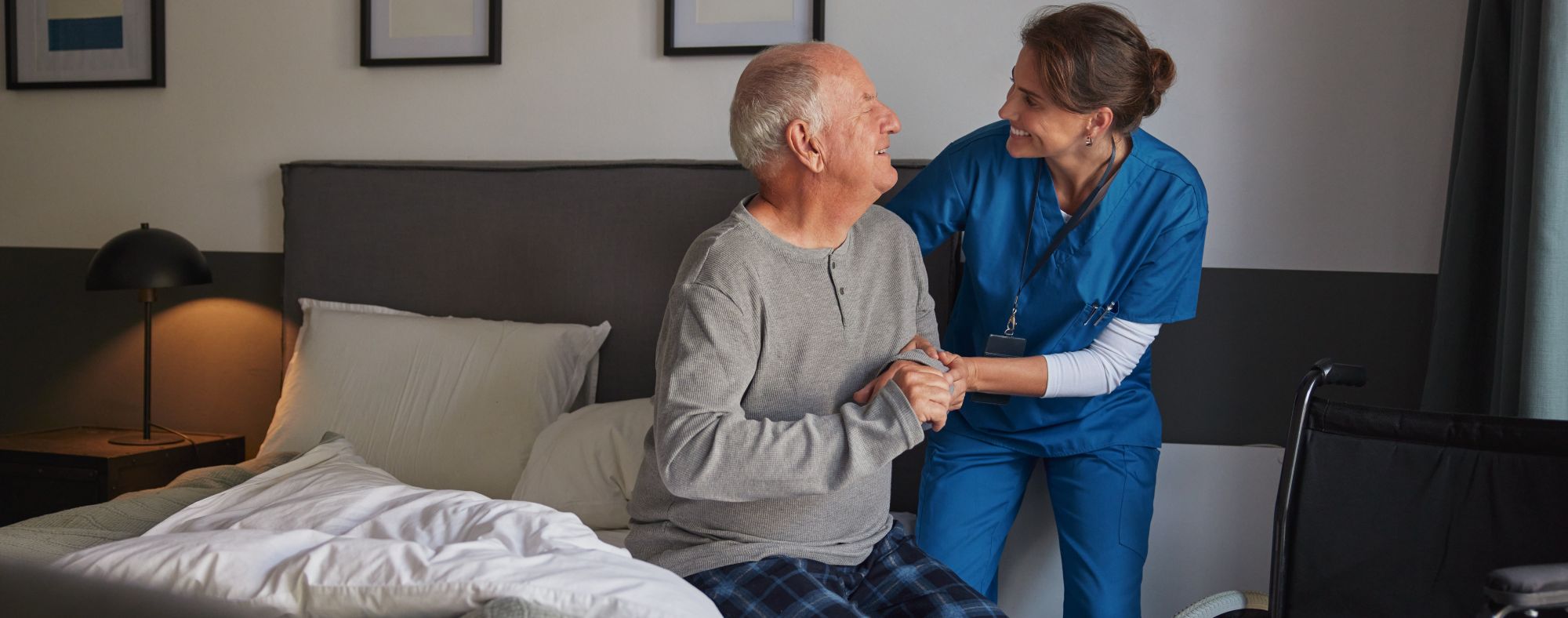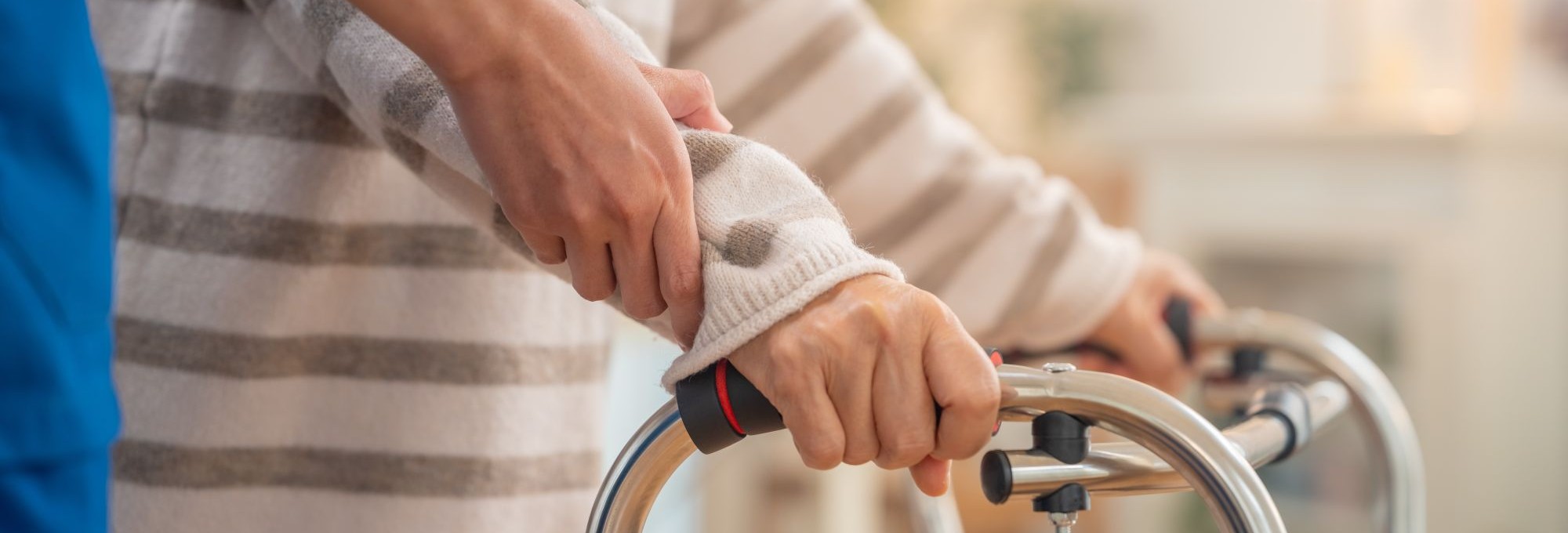The Impact
Over one in four older adults fall each year, leading to 36,000 deaths, three million emergency department visits, and one million hospital stays in America alone.1
Many people who fall, even if they’re not injured, become afraid of falling. This fear may cause a person to cut down on their everyday activities. When a person is less active, they become weaker, increasing their chances of falling. If they have fallen before, their chance of falling again doubles.2
So, not only does falling cause injury, fatalities, and high medical costs, it impacts all areas of wellbeing. It is essential for senior living communities to take steps to prevent falls and protect their residents.

Prevent
Prevention is possible. The best approach is holistic: combining strategies that address the environmental, behavioral, and biological risks. These can include safety features like automatic lighting and handrails, exercise programs to improve physical strength, and addressing medical and physical health.
Step One: Assess
The first step is assessing and addressing the risk factors unique to each resident. One way to do this is to use a risk survey. For example, this online quiz from the National Council On Aging quickly and clearly outlines whether an individual is high or low risk, allowing communities to identify individuals who need further support.
Step Two: Environmental
Next, address the physical environment to remove risks and provide support systems. Clear living areas of hazards and ensure safety equipment such as railings, grab bars, and slip-resistant surfaces are installed. Make sure there is adequate lighting in living spaces and community areas. Automatic lighting solutions can sense when a resident is active and turn the lights on to provide immediate visibility.
Step Three: Behavioral
One of the most impactful fall prevention strategies is to build strength and balance. Provide an exercise program with a focus on fall prevention. When residents maintain and grow their mobility, they are less likely to fall. Take a look at the CDC’s “Guide to Implementing Effective Community-Based Fall Prevention Programs” to learn more about how to implement one of these programs.
Step Four: Biological
Finally, check residents for vision, foot, and overall health. Ensure that eye prescriptions are up to date so that a resident can clearly see their surroundings and navigate spaces. With age also often comes loss of feeling in feet, which can contribute to the danger of falling. Ensure residents are wearing proper footwear to support.
Medications and Vitamin D intake can affect fall risk as well. Some medicines or medicine combinations can cause drowsiness, dizziness, and increased fall risk. On the other hand, taking Vitamin D supplements has been shown to decrease falls by 38%.3 Encourage residents to talk to their physician about medication effects and to consider taking Vitamin D supplements.

Protect
Prevention efforts are essential to reduce the number of falls that residents experience. However, it is even more crucial to have a safety net in place for residents who do fall.
Many older adults are unable to get back up after a fall, whether from an injury or a lack of mobility. This can result in a “long lie”, when a person is left on the ground for an hour or more after a fall. These long lies can cause increased injuries, fatalities, and psychological damage.
The first step to address this danger is to once again to identify high-risk residents. When you are aware of who is at risk, you can then equip them with strategies to protect and safeguard against the worst case scenarios.
Educate residents on how to get back up after a fall in cases when they are uninjured. The AARP has provided a guide of step-by-step techniques that can help seniors navigate the aftermath of a fall safely.
Then, invest in fall detection technology. This ensures that falls will not go unnoticed. Instead, caregivers will be immediately alerted in the event of a fall and can respond right away. Not only can this prevent long lies and all the damage associated with them, but they can also catch the falls that go unreported, which can help to identify residents that may be at risk of a worse fall in the future.
Fall Detection
The QUANTUM™ Fall Detection solution consists of pendants that tie into a nurse call system. When the pendant senses that its wearer has fallen, it sends a special alert to caregivers, making sure help is on the way.
Other solutions may use sensors or cameras to detect falls. While this can prove effective, many residents are uncomfortable with a camera in their homes, and prefer to protect their privacy. In addition to this, a camera is only able to catch falls within its view. With the fall detection pendant, a resident can continue living independently throughout their community and stay protected in every room they enter.
Facilities are encouraged to explore their options and find technology that best supports their residents. Learn more about the QUANTUM™ solution here.
A study looked at the effects of fall detection on a resident’s fear of falling and found that they reported feeling more confident, independent, and safer. So not only does this technology protect residents in the worst case scenario, it also helps high-risk seniors to maintain their lifestyles and enjoy their communities without fear.
If you would like to incorporate Fall Detection into your community, now is the time! JNL is currently offering a special deal that includes ten fall detection pendants, so you can protect your most at-risk residents and see the impact for yourself. This deal will be available until Dec. 15, 2025.
1 CDC. “Facts about Falls.” Older Adult Fall Prevention, 9 May 2024, ww.cdc.gov/falls/data-research/facts-stats/?CDC_AAref_Val=www.cdc.gov/falls/facts.html.
2 Bloch, Frédéric. “Critical Falls: Why Remaining on the Ground after a Fall Can Be Dangerous, Whatever the Fall.” Journal of the American Geriatrics Society, vol. 60, no. 7, July 2012, pp. 1375–1376, https://doi.org/10.1111/j.1532-5415.2012.04017.x.
3 Gallagher, et al. “Active Vitamin D (Calcitriol) as a Falls Intervention.” 2007.